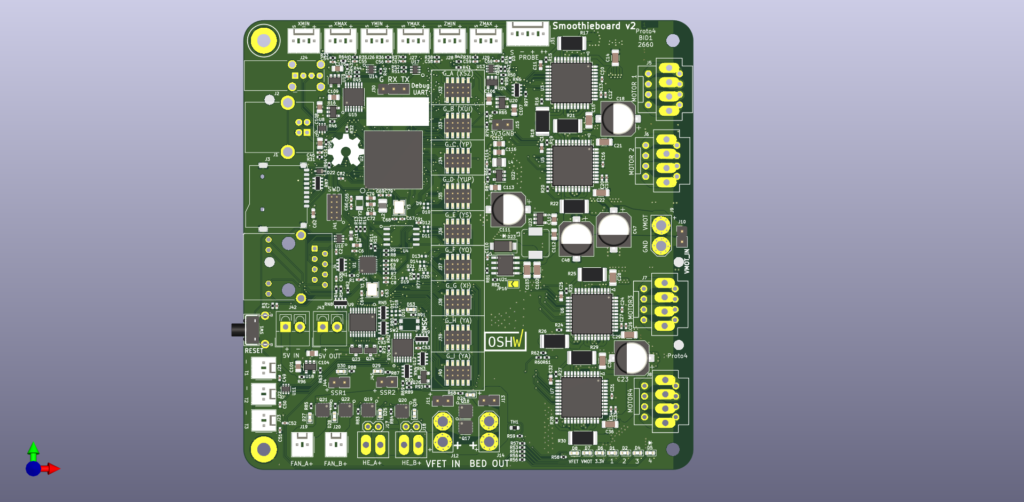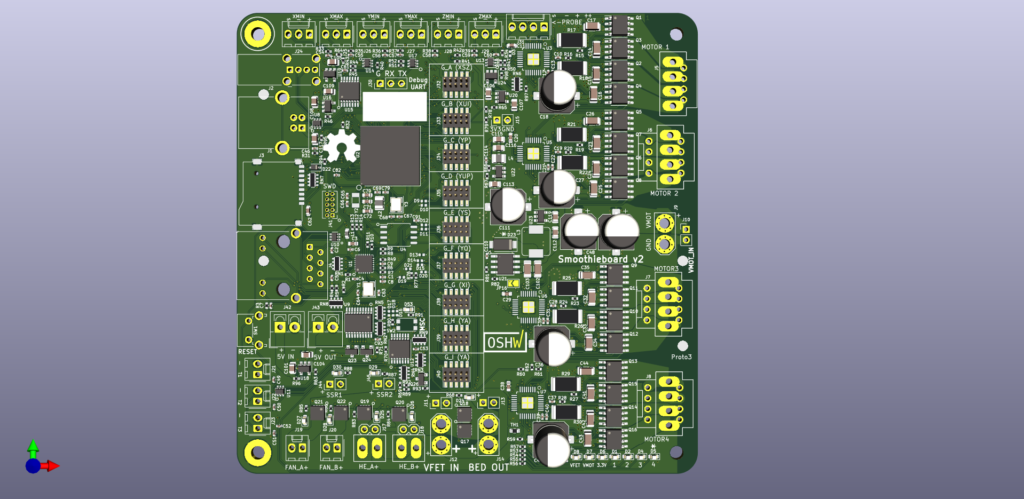It has been a while since we last posted. Very busy times…there has been a lot of progress to catch up on.
First off,
Chip shortage is still raging. We have everything on hand except for the TMC2590. We placed our orders back in August and the original estimate was September. Slowly the dates have been pushing back about every couple weeks. We have significant orders in with both Digikey (Mar. 11) and Mouser (Apr.11). So as soon as these parts are delivered we will have plenty for the V2 Prime as well as the daughterboards. Although, based on the shifting dates I have seen so far I would not expect these shipping estimates to be reliable.
This time has allowed us to revise 3 versions of the prototype and we have enough drivers onhand for testing.
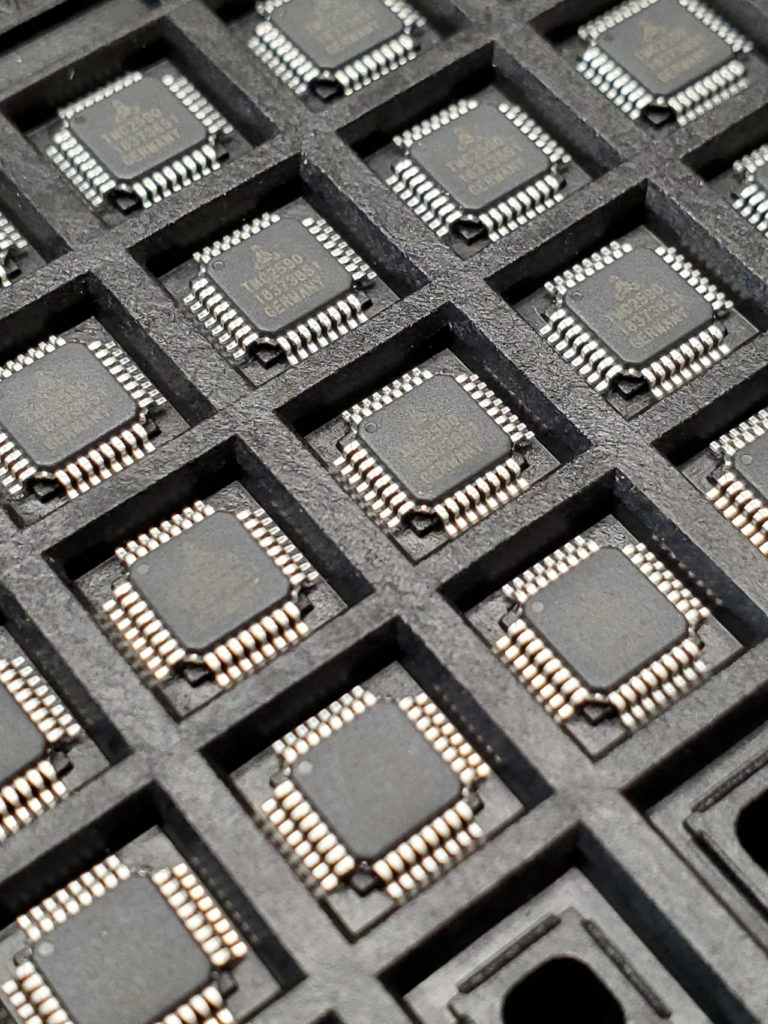
Although this may seem bleak, don’t fret, we have plans. More on that in a bit.
Second,
Prototypes for the V2 Prime have reached the final point (we believe).
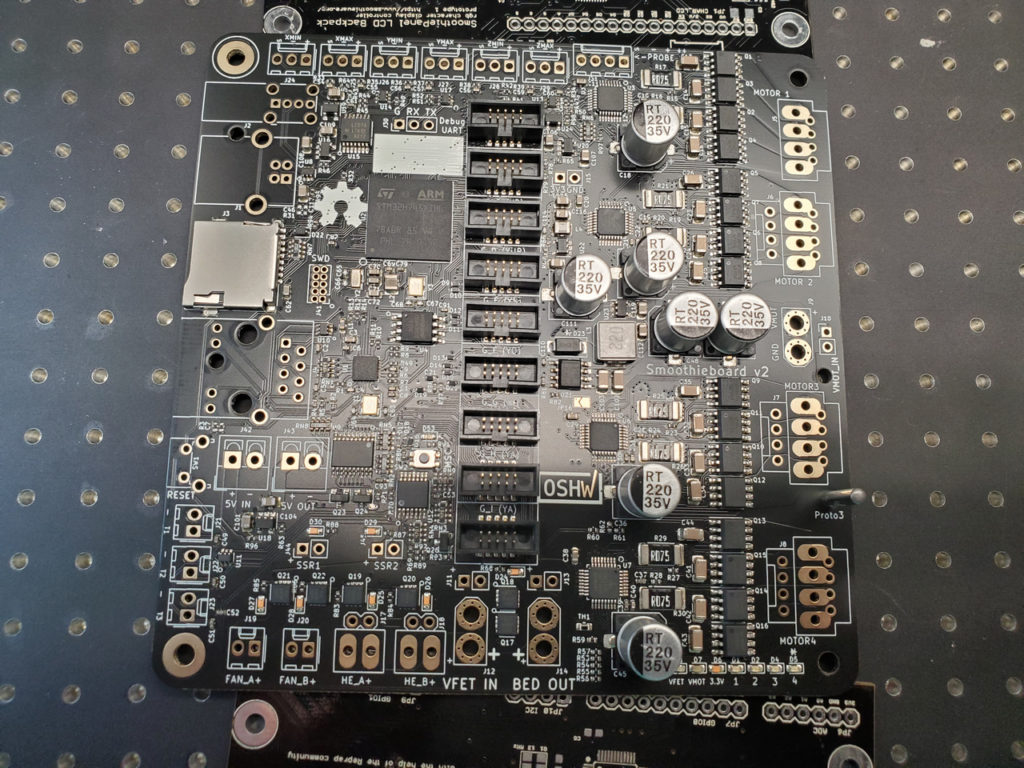
All known bugs have been solved and core segments have been tested and verified. The board has quite a few changes since the initial prototype…here are some of the changes and updates.
-Multiple driver options:
Due to the ongoing chip shortages our orders for TMC2590 keeps being pushed back and during that time the TMC2660 seem to have for the moment come back in stock. We recognized the benefit of multiple driver options on the Prime board and Kliment was kind enough to revise the TMC2590 version into a TMC2660 version as well. We also decided to use the higher current range resistors for the TMC2590 so it will be more suitable for CNC and larger motors and the TMC2660 version will be better for Lasers, printers and smaller stepper motors.
This we believe for most users will be acceptable as the cost is similar and we believe for smaller motors (lower currents) the TMC2660 may function better. This is all going to require a lot more testing and verification including customer feedback…but the TMC2660 we also used on the earlier LPC4330 version of the board and they worked very well on my machine. At this point it looks like the first production Kickstarter batch will be the TMC2660 (as the dates continue to push back for the TMC2590) so our backers will have the option of which board type they would prefer to have although the TMC2660 version will be fulfilling first.
-Board auto-recognize
Due to the multiple board options we are planning we thought it would be best to assign a couple unrouted hardware pins to be used as a binary indicator of which board is present so the firmware can automatically config based on the settings/drivers of that particular board. The auto config settings can also be changed in the config if needed.
-Probe input:
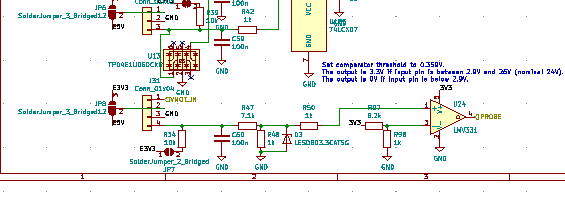
We added a comparator and ESD protection to the probe input. Now the onboard input is capable of switching powered probes with voltage ranges from 3-26V. For higher voltages (i.e. 40V inductive probes) we plan on making a plug in board with another comparator onboard which will allow higher voltages.
-5v system
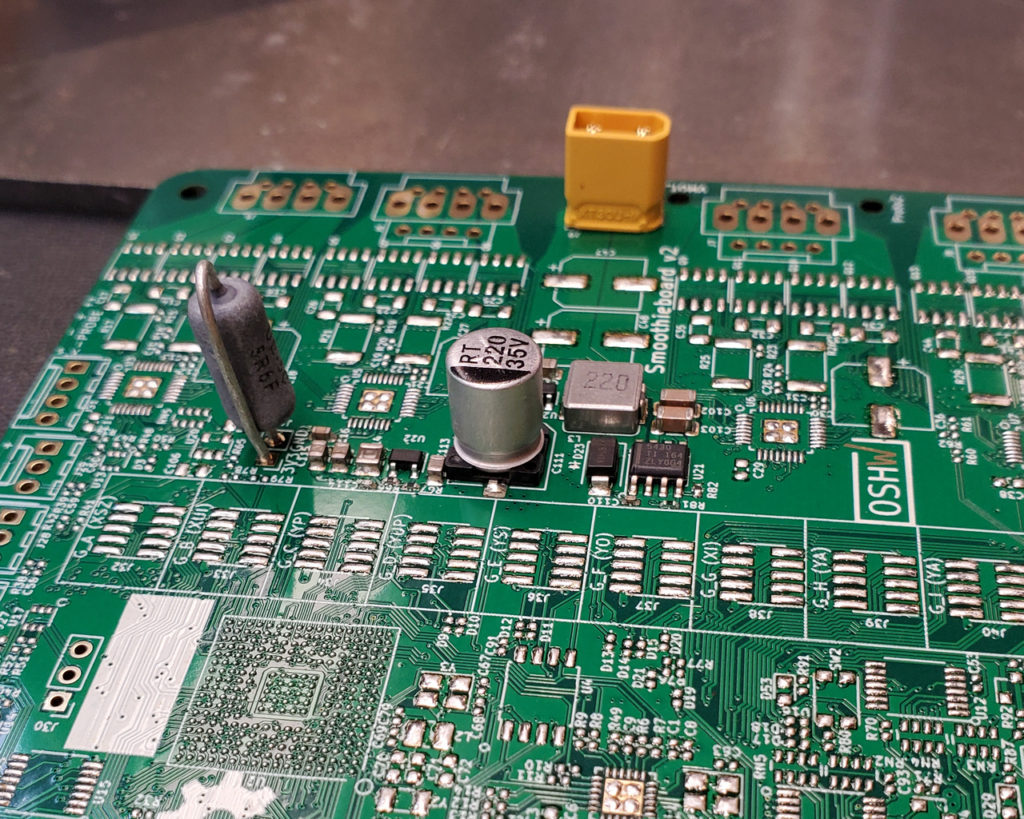
We revised the 5v system to have a few differences and options. The output is 3A @5v and 1.2A @3.3v while using the onboard 5v regulator which is driven from the main power input.
The USB input automatically switches off and isolates from the 5v regulator circuit when it is powered up and also has a jumper to disable the USB power entirely (for when you want data only on USB such as when using a raspberry pi). The 5v regulator can also now be shut off entirely with a jumper for those who want to run an offboard 5v regulator or otherwise would like the circuit to be disabled.
There has been current limiting added to some of the 3.3 and 5v outputs on the expansion headers, USB and endstops to prevent accidental damage from shorting.
-ADC inputs
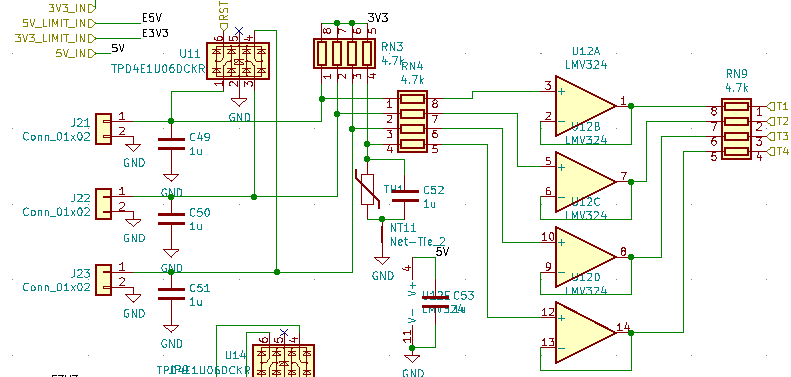
This board has considerably better ADC inputs than previous versions. Each Thermistor input is now ESD protected and opamp buffered. This should allow for much more stable readings on the first 4 ADC ports. Currently, the Prime has 3 thermistor inputs and an onboard PCB thermistor. The MCU also reports chip temperature as well.
There are 2 spare raw ADC pins which are also broken out and assigned to Gadgeteer headers for those who would like an ADC with none of the discretes and/or opamp in the circuit.
-FET and SSR outputs
There are 4 primary FET outputs which can be assigned for hotends, fans, etc. They are all the same standard fet. The Vfet which is supplied to the primary FET circuit also has a high side FET onboard which can be used to shut off hotends/fans in case of emergency and/or low side FET failure.
A separate bed circuit has 2 paralleled FETs which do not have a high side switch which are intended for higher loads such as a heated printer bed.
As well as the FET outputs we also have added 2 “SSR outputs” which have small onboard transistors for driving things such as SSRs and other devices which have more current draw than a standard MCU pin can provide.
-MSD button
With V1 often users had issues when the MSD (sd card) was enabled to automount. This also led to at times SD card corruption and failed runs. For the V2 board we have added a small pushbutton to the pcb that when pressed enables MSD. When ejected the board returns to it’s normal state and the SD card is unmounted from the Host.
Next,
There have been some questions about plans for dates on the next versions of the boards such as the Mini and the Pro. I believe as soon as the Prime ships the first plan is to make the “Core” board….which will be expanded into the Mini. Most of the major issues have been worked out and this process should be fairly painless (compared to the parts shortage).
For the Pro…I see the main issue being the availability of FPGAs. From what I have heard they were one component which was hit hard by the chip shortage…but even if the parts were available we still have a lot to get done before we get there. I expect Pro to be the last thing completed and is still many months out at least.
Several more expansion boards have been planned during the development as well and it should make setting up machines significantly less painful compared to the past. Plugs and configs will be able to be plug/play. I have personally been experimenting with DIN rail mounting of the electronics and daughterboards for a cleaner setup (more to come). As an added benefit, largely, where we could we are using the same parts on the main boards as we are on the expansion daughterboards…this should make our entire production flow much simpler as well as allow for predictability in our expansions.
For the good news, things are going very well. Everything is almost ready to go into full production (will be before we have PCBs and parts). The reflow profile I have been using has so far been perfect and the boards are coming out nicely.
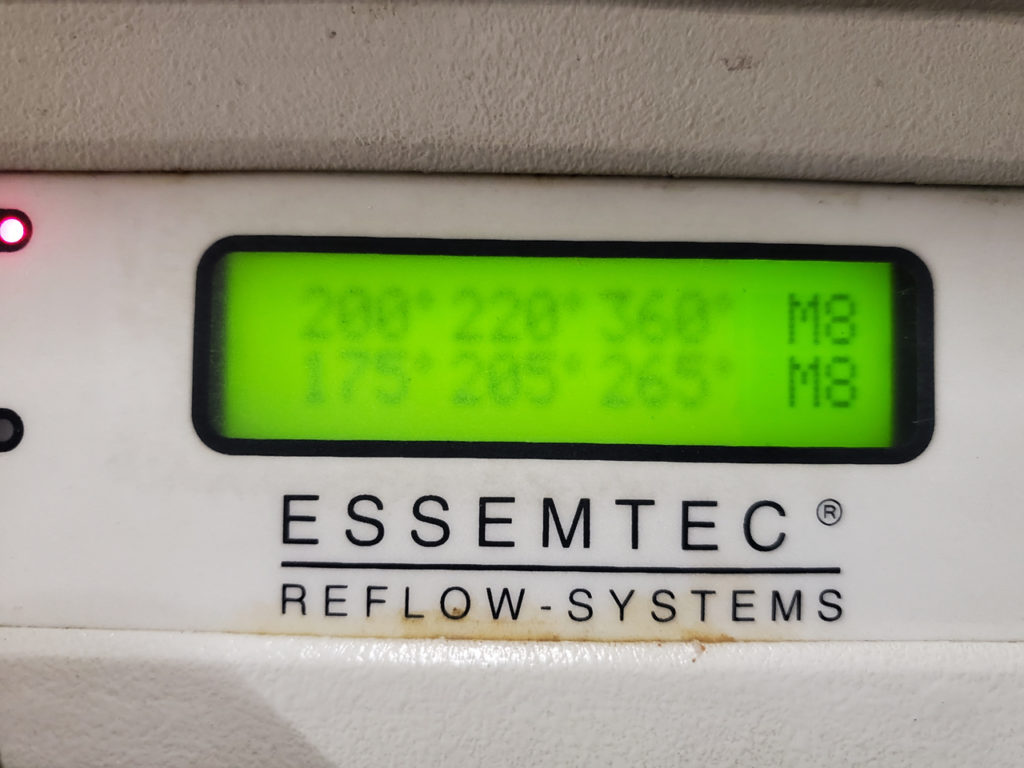
Next is to setup the PnP. So far I have been hand placing the boards @ about 4hrs/board (front and back)…it will be nice to have the machine do that part.
These are exciting times. We are almost there and I can’t wait to start seeing what kind of machines you brew up with the new more powerful hardware.

